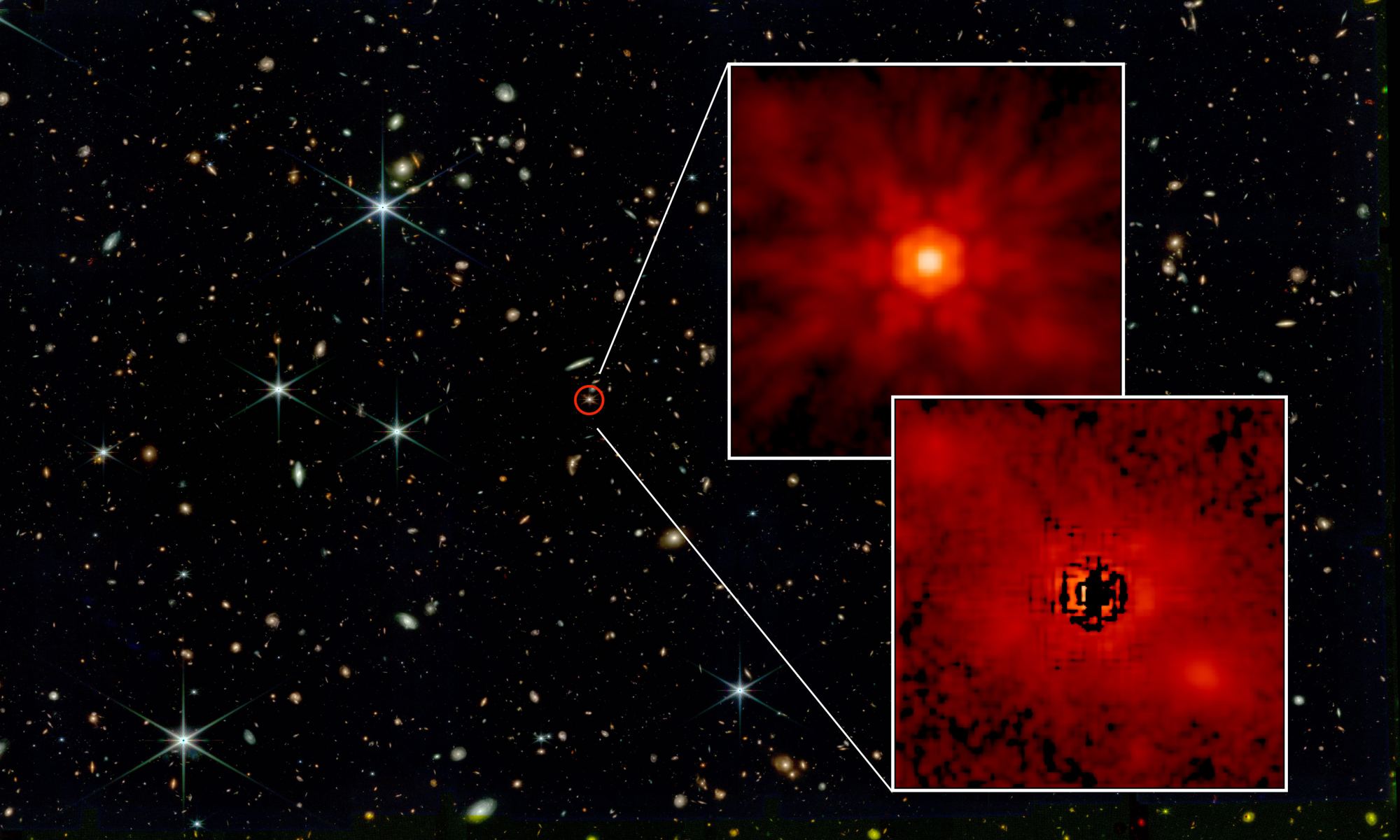Supermassive black holes are of key importance in the development and evolution of galaxies. They form galaxies, create stars, and possibly influence the clustering of dark matter. Supermassive black holes can be found in almost all galaxies, which often make up a small fraction of the galaxy’s mass. However, the question of how these holes gained mass so quickly remains open.

We gained most of our knowledge about early black holes through quasar research. Quasars occur when supermassive black holes are in a highly active phase, absorbing huge amounts of matter, which heats up and emits intense light. Observations by space telescopes, in particular James Webb, have shown the presence of quasars as early as 13 billion years ago, indicating their greatness and activity only a few hundred million years after the Big Bang. However, the brightness of quasars makes it difficult to observe their galactic environments.
A recent study published in The Astrophysical Journal used James Webb data on six distant quasars located about 13 billion light-years away. By comparing light with model quasars, they were able to identify light sources from the quasar and from the surrounding galaxy. This gave the first images of distant galaxies where these ancient quasars are located.
According to the results of the study, the mass of supermassive black holes in early galaxies is about 10% of their mass. This is much more than in local galaxies, where black holes usually make up less than a tenth of the mass of the galaxy. This may indicate that early supermassive black holes grew extremely fast, and may even have been the original causes of the formation of their galaxies.
Although the question of how supermassive black holes formed so quickly in the early universe remains open, this study has revealed new aspects of their evolution.
Earlier, we showed what happened beyond the event horizon of a black hole.
According to space.com
Follow us on Twitter to get the most interesting space news in time
https://twitter.com/ust_magazine


